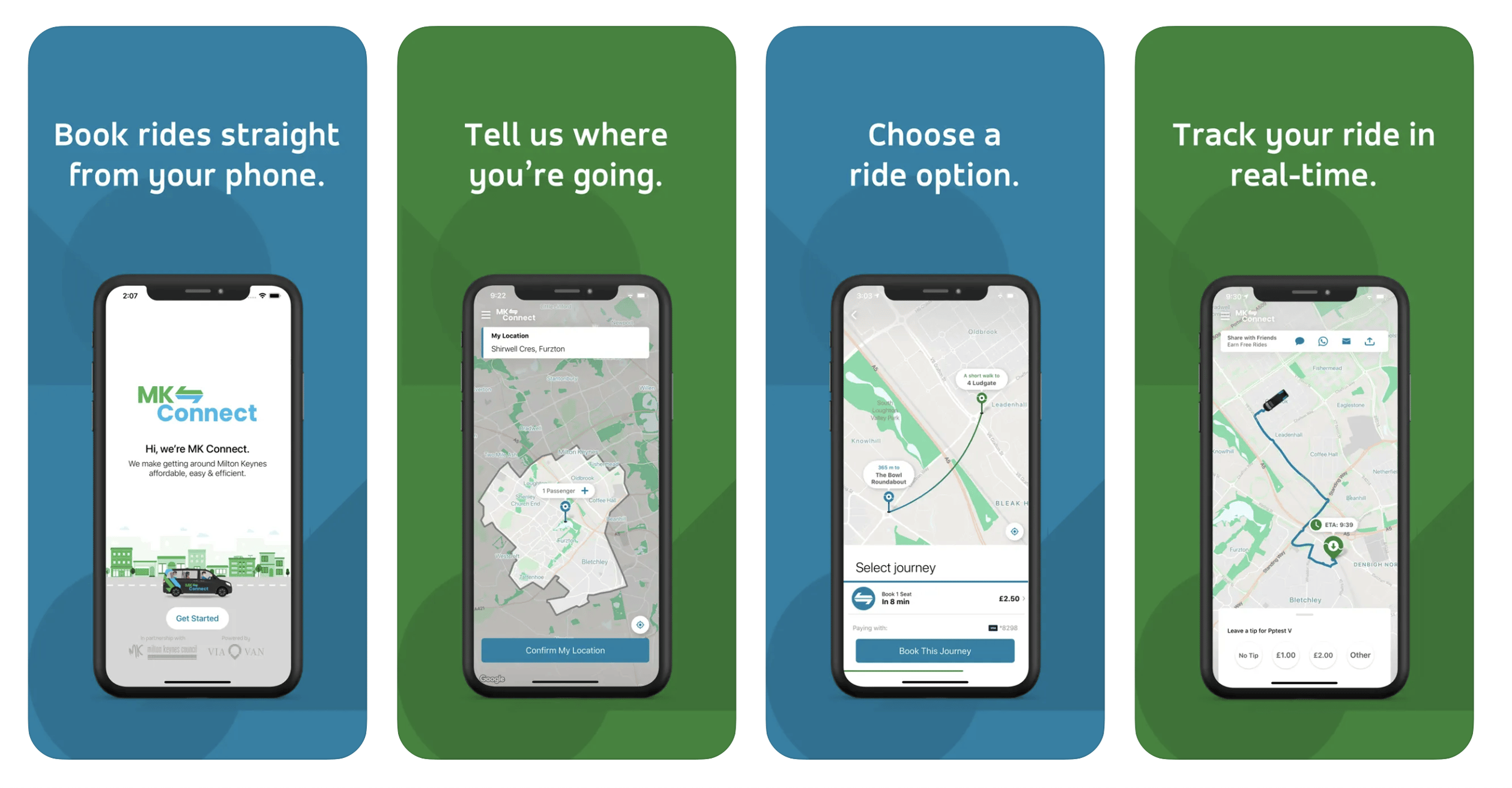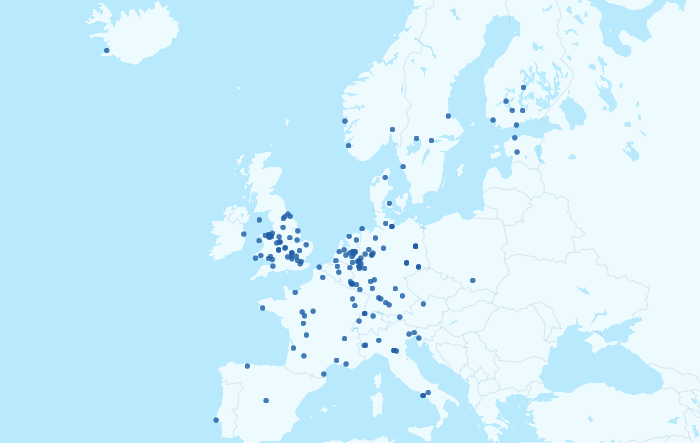Image: A select representation of cities and organizations in the EU using Via-powered DDRT.
The integration of digital demand-responsive technology into transport networks is becoming mainstream. Its successes around Europe in the past few years have laid the foundation for a future of tech-enabled public transport. In 2020, an analysis of worldwide DDRT deployments found that the average service term was around 12 months — shorter than standard transport contracts, which could be up to seven years in duration, and reflective of a landscape dominated at the time by pilot programs. These days, DDRT has matured into a service mode with longevity: at Via, we surveyed our active deployments and found an average service term of 20+ months, nearly double the previous industry average.
DDRT services are now fully integrated into transport networks, filling gaps where fixed-route transport cannot operate cost-effectively. A large number of European cities with Via-powered operations, like Milton Keynes, U.K., Stuttgart, Germany, and Quimper, France, have extended contracts to three or four years, while expanding service zones, hours, or fleets after seeing DDRT’s clear impact delivered to their communities.
 With a few taps, passengers can book an on-demand trip in the app. Phone-free passengers can call the dispatch center to schedule a ride.
With a few taps, passengers can book an on-demand trip in the app. Phone-free passengers can call the dispatch center to schedule a ride.
When implemented as a long-term solution, DDRT can offer a convenient alternative to private car travel in areas where traditional bus headways can exceed 60 minutes. One Via partner saw 70% of passengers leaving their private vehicles at home more often to ride with DDRT, cutting congestion and carbon emission on road; and another saw a 60% reduction in wait times compared to the previous fixed line services, and greatly improved service quality and rider loyalty. The other reported a 77% increase in fleet utilization with DDRT.
- READ: Data shows that demand-responsive transport is the mode that best matches the UK’s new travel patterns
- One UK city sets out to offer better transport service at a lower cost — and reduces carbon emissions in the process

Data Journalist




%206.png?width=71&height=47&name=The%20Buzz%20Blog%20Hero%20(1750%20x%201200%20px)%206.png)